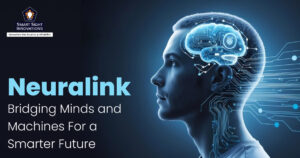 Automation is defined as a procedure or a series of steps that can be pre-programmed. When you think of automation it usually is associated with industry and industrial processes where we have PLCs and ASICs as well as dedicated computer systems, depending on the sophistication and extent of automation.
Automation is defined as a procedure or a series of steps that can be pre-programmed. When you think of automation it usually is associated with industry and industrial processes where we have PLCs and ASICs as well as dedicated computer systems, depending on the sophistication and extent of automation.
The controllers usually have sensors that carry out a measurement and compare results against set values and adjust a process in one use case scenario. In another, where a sequence of steps must be carried out, other parameters may be applied such as measurement of weight or actuation or time or temperature. Sensors are wired to controllers or connected through ethernet or wireless and the controllers, in turn, switch on or off actuators
IoT A One-Way Street
Then IoT arrived on the scene. IoT also makes use of sensors but in a different way. There are sensors that capture data and stream the data via the internet or wifi or wired network to a data gathering, processing, and analytics unit.
Artificial Intelligence too puts its foot inside the door and helps to derive intelligence and predictive capabilities. Where you have AI, machine learning is never far away so we have ML helping the system to gather intelligence and become smarter as it matures. It is not too tough to retain an IoT service provider to put the essentials in place. So we have a new term for industrial automation influenced by IoT and that is the industrial internet of things (IIoT). Where automation was local, IoT or IIoT is not bound by such restrictions.
Data streams to the cloud and the control center could be anywhere, thousands of kilometers away from where the actual production takes place.
IoT-Automation – Mutating To A New Species
What kind of data IoT streams depends on the sensor in use and the data it is programmed to capture on a continuous basis or at intervals. The trouble with IoT was that it simply captured and fed data for analytics. Managers analyzed data and then took decision whereas production proceeded with the help of automation. IIoT introduces a twist to the tale.
A common scenario in automation is that works within its loop and IoT or IIoT sensors are intruders, observing and gathering data about how they work but not directly contributing to the automation process. Software is the stumbling block since all that is needed to bring about a marriage of IoT with automation is to develop software that will blend the two processes and create a two-way channel.
One can even have wishful thinking about software for IoT-Automation combine that uses AI/ML to handle even the most complex processes on their own and do away with human intervention to a large extent.
IoT-Automation – The Next Generation Of Automation
In a way automation is a somewhat dumb process relying on just a sequence of steps and primitive logic. Transplant IoT genes into the system and overlay with DNA of AI and what you have is smart automation that learns to make complex decisions that maybe even human beings cannot take so quickly.
IoT morphs into IIoT and from being a one-way channel becomes an interlinked multiway channel that derives information from the automation system and also controls it. Think of a typical scenario in which automated robots are carrying out welding of parts but demand slackens or raw materials are in short supply or a process upstream or downstream has slowed down.
When everything interconnects through software and is managed centrally you have automation that takes automatic decision such as to switch off a couple of robots to bring equilibrium in the process flow. The domino effect extends down the line. IoT-Automation will automatically spew out instructions to cut down supplies from the supply chain and also alert managers so that they can galvanize the sales team to step up sales efforts. Think of a chemical process that is time, pressure and temperature-dependent.
Automation may manage this nicely enough. However, should the power fail, all three parameters could be affected and the batch could be a total loss? Inject IoT and you have smart systems that can identify a fault and send out instructions for rectification or switch in alternate sources of power. It does require a very capable IOT development company to come up with a solution where automation makes abundant use of IIoT, AI and ML but it is not entirely impossible.
IoT-Automation – Pokes Its Nose Everywhere
Think of automation as a worker tasked with specific functions that he carries out admirably but does not bother with anything else.
Enter IoT with AI and this can be considered as the brain melding with the worker. Now you have a worker (automation in this case) who looks beyond his routine tasks and pokes his nose everywhere. Why? In industry, nothing works in isolation. A hitch at one spot in an automated process would affect everything upstream and downstream. A dumb worker would simply sit or stand at his spot.
IoT-automation with some degree of smarts would start poking around to know what went wrong and where and then take smart decisions. The nosey parker may go right down to the sales section and see if sales orders have declined and then take an automatic decision to pare down production. Conversely, if orders are increasing the smart system can gear up to increase output to the extent of even automatically activating suppliers to ramp up supplies.
A side effect of this marriage of industrial internet of things with automation is that the poor programmable logic controller is likely to become unemployed and the species may vanish or be relegated to inconsequential tasks.
On a lighter side, you can transplant intelligent IoT-automation to the home environment. Imagine the wife phoning to say she will be late. The system galvanizes into action and spews out a stream of digital orders to activate the food cooking process. Hubby dear can still relax with his feet up. Maybe that day is not far off.
Back to industry and the IIoT-automation combine. Industries that rope in the top internet of things development company in India can have smarter manufacturing, less waste, reduced rejection, faster time to market and a leap ahead of their competitors. Manpower is not getting cheaper and if machines can do things on their own then it is all to the good.













